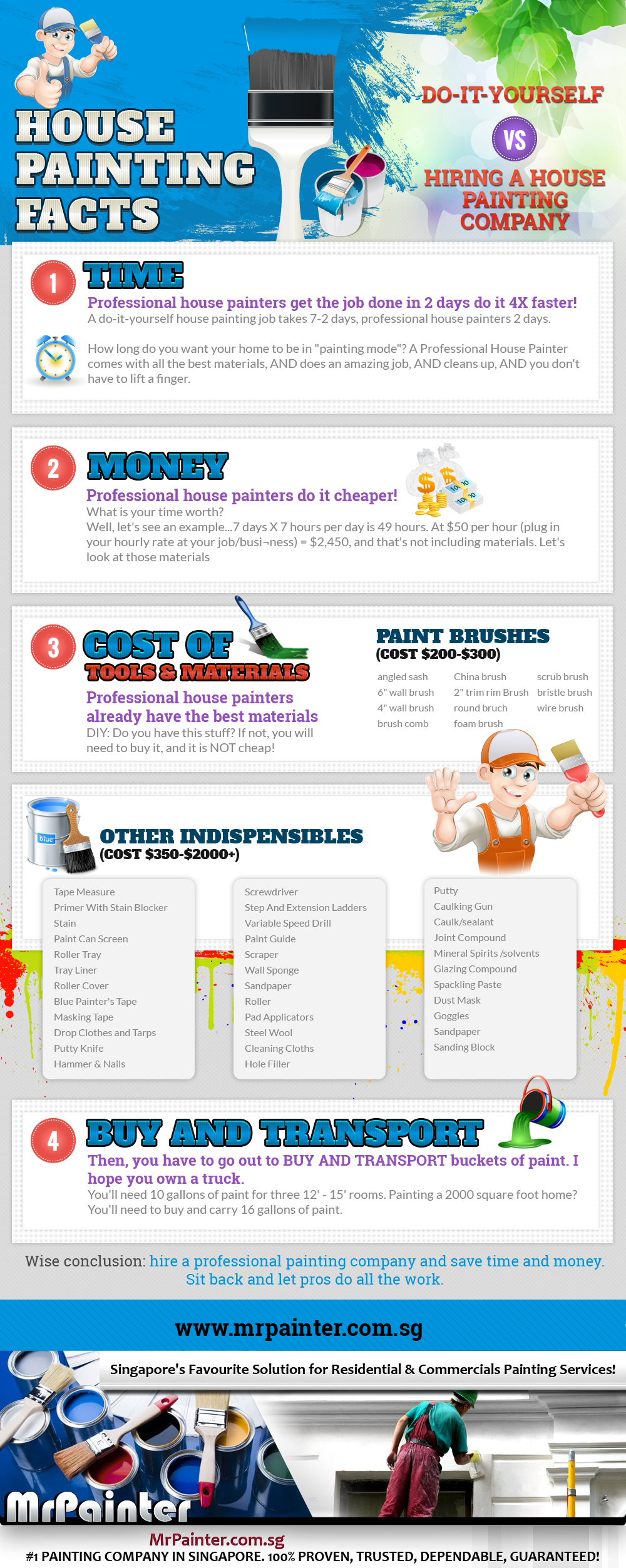Seasonal Factors To Consider For Commercial Exterior Painting: What You Need To Know
Seasonal Factors To Consider For Commercial Exterior Painting: What You Need To Know
Blog Article
Material Develop By-Fox Bagger
When you're planning a commercial outside painting job, seasonal variables can make or damage your results. You'll want to take into consideration just how temperature level and moisture influence paint application and drying out times. Choosing the best season can guarantee your paint adheres effectively and lasts much longer. Yet which periods are really the very best for this kind of work? Allow's check out the crucial elements that can impact your project's success.
The Influence of Temperature Level on Paint Application
When you're preparing an industrial exterior paint task, the temperature can considerably affect exactly how well the paint adheres and dries out.
Ideally, you intend to repaint when temperatures range in between 50 ° F and 85 ° F. If it's as well cool, the paint might not cure correctly, bring about concerns like peeling or splitting.
On the other hand, if it's too hot, the paint can dry out as well promptly, preventing appropriate adhesion and leading to an irregular finish.
You must likewise take into consideration the time of day; early morning or late afternoon supplies cooler temperature levels, which can be extra beneficial.
Always check the producer's suggestions for the specific paint you're using, as they typically provide assistance on the ideal temperature range for optimal outcomes.
Moisture and Its Result on Drying Times
Temperature isn't the only ecological factor that influences your industrial external painting project; humidity plays a significant role also. High humidity degrees can reduce drying out times significantly, influencing the total top quality of your paint task.
When the air is saturated with dampness, the paint takes longer to heal, which can bring about problems like poor attachment and a higher threat of mold growth. If you're painting on a specifically moist day, be prepared for extended delay times in between layers.
It's critical to monitor regional weather conditions and plan accordingly. Preferably, aim for moisture levels in between 40% and 70% for ideal drying.
Maintaining these consider mind guarantees your job remains on track and provides an enduring coating.
Best Seasons for Commercial Exterior Paint Projects
What's the very best time of year for your commercial external paint tasks?
Spring and early autumn are generally your best bets. Throughout these seasons, temperatures are mild, and moisture levels are typically reduced, developing excellent problems for paint application and drying.
Avoid summer season's intense heat, which can cause paint to dry also swiftly, resulting in bad attachment and finish. Similarly, winter season's cold temperatures can impede proper drying and curing, risking the longevity of your paint job.
Go for days with temperatures in between 50 ° F and 85 ° F for optimal results. primer shelf life in mind to examine the neighborhood weather prediction for rain, as wet problems can destroy your job.
Preparation around these elements guarantees your painting project runs smoothly and lasts much longer.
Final thought
Finally, intending your industrial external paint jobs around seasonal considerations can make a significant distinction in the end result. By scheduling job during the perfect temperatures and humidity degrees, you'll make certain much better bond and drying out times. Remember to keep an eye on neighborhood weather forecasts and pick the right time of year-- spring and very early fall are your best options. Taking these steps will certainly help you attain a resilient and expert finish that lasts.
